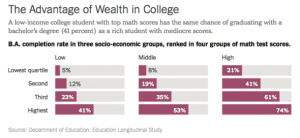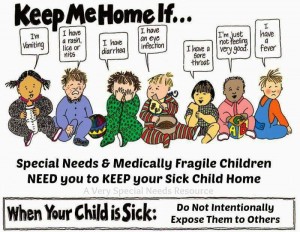Conversation with Shasta at the Science Fiction Convention
(Shasta and Mommy are having breakfast at Saranellos, an Italian restaurant at the Westin Hotel in Wheeling. Mommy has gone there for Capricon, a science fiction convention she regularly attends. Shasta is tagging along as usual, invisible to other diners, but resplendent in her bright purple cape and gold-sequined top-hat. Her sheepdog-sized slug body is slouched over the square wooden table as she rests and talks. Mommy has finished her oatmeal and is sipping Brahmin tea as she types. Mommy is up early and has gone to breakfast with Shasta while her girlfriend sleeps.)
M: Good morning, Shasta!
S: Good morning, mommy. Is Splenda good for you, mommy? (Shasta looks doubtfully at a yellow packet.)
M: Nobody knows. Right now, they have been investigating for half a century and they still aren’t sure if bacon is bad for you. Carbs are hurtling up to the top of the food pyramid. Who cares? I don’t eat much anyway.
S: You should eat leaves. Leaves are great.
M: Well, no one is debating that leaves are healthy. Except for the poisonous ones of course. Shasta, I did a lab this week. They were supposed to take apart lilies and identify the plant parts. Can you imagine that I felt I had to tell both classes not to eat the flowers? But they were doing such weird things as they tore up the flowers. Minions. Crazy-making. If flower abuse was a crime, maybe I could have a peaceful week while some of them worked their way through the criminal justice system.
S: You were murdering flowers anyway, mommy.
M: They were already dead. Those were autopsies.
S: You can’t abuse the dead.
M: Point taken. I wonder if necrophilia is even a crime. Necrophilia per se, that is. I see all sorts of possible infractions that might be committed while obtaining dead bodies.
S: The minions were a little crazy this week.
M: They are just kids. It’s easy to forget because twelve to thirteen is a twixt age. They can go from little kid to pregnant in a heartbeat if you don’t watch all the signs. I love this age. I get this age. But they can drive you just about batshit. Jackie took off into the twilight, wearing a thin, worn, gray hoodie in windy, nineteen degree weather, before her mom arrived. Custodians and I ended up wandering around, looking at cameras, and calling for Jackie. At first, none of us could believe she had taken off walking. But she had. Mom called me while I was driving home to tell me she was safe.
I have so much whole-child education to do on Monday.
S: Patience, mommy.
M: Don’t let me start planning next year. I have to let go. I’m too old for this madness.
S: I know. I keep trying to remind you.
M: I never was the best listener. Too ADHD, way too ADHD, although I have slowed down. Too unaware of my surroundings too. I ought to talk to Sam (another teacher) about that. I don’t think she is a dreamer. Non-dreamers can manage surroundings much better than their counterparts, even the attention-challenged ones, but she is working in a dangerous place. I worry about Sam. Maybe she is more aware of her surroundings than I am, though.
S: Maybe. But she is a phone loser.
M: Exactly.
(Pause. Mommy takes another sip of her Brahmin black tea.)
M: I need to quit. I get tempted by those job listings. I like teaching. I like kids. That feels like a truth. But I am losing my patience for bureaucratic bullshit. I like Joel but some of that interview was just goofy. I loved the part where he suggested I should not call the students minions because the dictionary definition of the word was not what we wanted our students to aspire to become. Do you think the minions have ever looked up the definition of minion? Not a chance. They know that minions are cute, little yellow creatures who bumble around having fun while working at mysterious tasks for an autocratic, but essentially lovable, adult. That definition fits my minions like a surgical glove.
S: Time to leave, mommy.
M: I know, Shasta. My patience is going. When Alex asked about the quiz yesterday, I had to laugh. I couldn’t cry. But it was one line – ONE LINE—of short, simple directions. I understand asking someone to clarify the meaning of a line. But they are supposed to read the line first, just read the line first. I can’t keep reading everything to everybody. And I can’t save anybody who won’t read. I would be so happy to buy books for readers, but as far as I can tell, I don’t have a single reader this year. How long am I supposed to wait for the next reader to arrive from Mexico? This has been a long, dry spell. At least the new girl from Mexico works.
The oatmeal was good. The tea, too. We could go to the con suite.
S: (Doubtfully) More food? Why don’t we go back to the room? We might try to pick up a program book.
M: I kind of like wandering around in a lost haze. It’s restful. I don’t feel like planning. The world’s waking up, though. We ought to relinquish this table, see what the world looks like.
S: It looks big. It always looks big. And it’s filled with details. Plus way too much salt. We could go back to bed.
M: That’s silly. Let’s go find a program book. Don’t worry about the salt. It can’t pass over into your dimension.
S: I know. I just object to it on principal.
M: Gotcha. There’s a lot to be said for objecting to inanimate objects. Salt hardly ever slips off the chain. We have it neatly trapped in this round, silver container and I guarantee you, Shasta, that salt is going nowhere while I’m here. I’ve got this. I can handle salt.
Waiters are more complicated. I am going to have to do the whole eye-contact thing to get that check.
S: I like the guy in the Star Trek uniform behind us.
M: Me, too. Why not costume before breakfast? I spy gang colors and signs all over this room. Nothing shouts out a gang affiliation like that Star Trek red security shirt with its spiffy Starfleet emblem. Puts my Batman t-shirt to shame.
S: Well, you’re tasteful, mommy.
M: Thanks, sweetie. Waiterman is looking somewhat harried. Buffet or no buffet, the surging crowd is clobbering him.
S: We weren’t in a hurry.
M: True enough.
Eduhonesty: Written in a comfy hotel slightly less than a year ago. I did retire. But no one should ever take seriously the ravings of a teacher in February.






